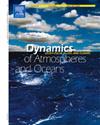Sensitive area in the tropical Indian Ocean for advancing beyond the summer predictability barrier of Indian Ocean Dipole
IF 1.9
4区 地球科学
Q2 GEOCHEMISTRY & GEOPHYSICS
引用次数: 0
Abstract
Using the geophysical fluid dynamics laboratory climate model version 2p1 (GFDL CM2p1), perfect model predictability experiments have been conducted to identify the sensitive area in the tropical Indian Ocean for advancing beyond the summer predictability barrier (SPB) of positive Indian Ocean Dipole (IOD) events. In these experiments, the model is assumed to be perfect, and prediction errors are only caused by initial errors. Initially, the impact of initial error patterns on prediction uncertainties was assessed by comparing dipole pattern initial errors with three sets of spatially correlated noises. The results revealed that dipole pattern initial errors tend to result in larger prediction errors and higher error growth rates in summer, leading to a significant SPB phenomenon. Notably, the large values of these dipole pattern initial errors are concentrated in specific areas. By eliminating initial errors within these areas, the prediction errors in summer are largely reduced, underscoring the sensitivity of prediction uncertainties in summer to initial errors in these areas. Moreover, the prediction errors in summer exhibit a higher sensitivity to initial errors within the subsurface large value area compared to those within the surface large value area. Consequently, the subsurface large value area in the tropical Indian Ocean is the sensitive area for advancing beyond the SPB, aligning with the corresponding location for advancing beyond the WPB. Eliminating initial errors within this area leads to a rapid decrease in prediction uncertainties, with a more pronounced reduction in winter than in summer. Through intensive observations in this sensitive area, significant reductions in prediction errors in both summer and winter can be achieved, thereby greatly improve the forecast skill of IOD events.
热带印度洋的敏感区推进超越印度洋偶极子夏季可预测性障碍
利用地球物理流体动力学实验室气候模式版本2p1 (GFDL CM2p1),进行了完善的模式可预测性实验,以确定印度洋正偶极子(IOD)事件的夏季可预测性屏障(SPB)的敏感区。在这些实验中,假设模型是完美的,预测误差仅由初始误差引起。首先,通过比较偶极子模式初始误差与三组空间相关噪声,评估初始误差模式对预测不确定性的影响。结果表明,夏季偶极子模式初始误差往往导致较大的预测误差和较高的误差增长率,导致显著的SPB现象。值得注意的是,这些偶极子模式初始误差的大值集中在特定区域。通过消除这些区域内的初始误差,夏季的预测误差大大减小,凸显了这些区域夏季预测不确定性对初始误差的敏感性。夏季预报误差对地下大值区内的初始误差的敏感性高于地表大值区内的初始误差。因此,热带印度洋的地下大值区是推进超越SPB的敏感区域,与推进超越WPB的相应位置对齐。消除该区域内的初始误差可导致预测不确定性迅速降低,冬季的降低幅度比夏季更明显。通过对该敏感区域的密集观测,可以显著降低夏季和冬季的预测误差,从而大大提高IOD事件的预测技能。
本文章由计算机程序翻译,如有差异,请以英文原文为准。
求助全文
约1分钟内获得全文
求助全文
来源期刊

Dynamics of Atmospheres and Oceans
地学-地球化学与地球物理
CiteScore
3.10
自引率
5.90%
发文量
43
审稿时长
>12 weeks
期刊介绍:
Dynamics of Atmospheres and Oceans is an international journal for research related to the dynamical and physical processes governing atmospheres, oceans and climate.
Authors are invited to submit articles, short contributions or scholarly reviews in the following areas:
•Dynamic meteorology
•Physical oceanography
•Geophysical fluid dynamics
•Climate variability and climate change
•Atmosphere-ocean-biosphere-cryosphere interactions
•Prediction and predictability
•Scale interactions
Papers of theoretical, computational, experimental and observational investigations are invited, particularly those that explore the fundamental nature - or bring together the interdisciplinary and multidisciplinary aspects - of dynamical and physical processes at all scales. Papers that explore air-sea interactions and the coupling between atmospheres, oceans, and other components of the climate system are particularly welcome.
 求助内容:
求助内容: 应助结果提醒方式:
应助结果提醒方式:


